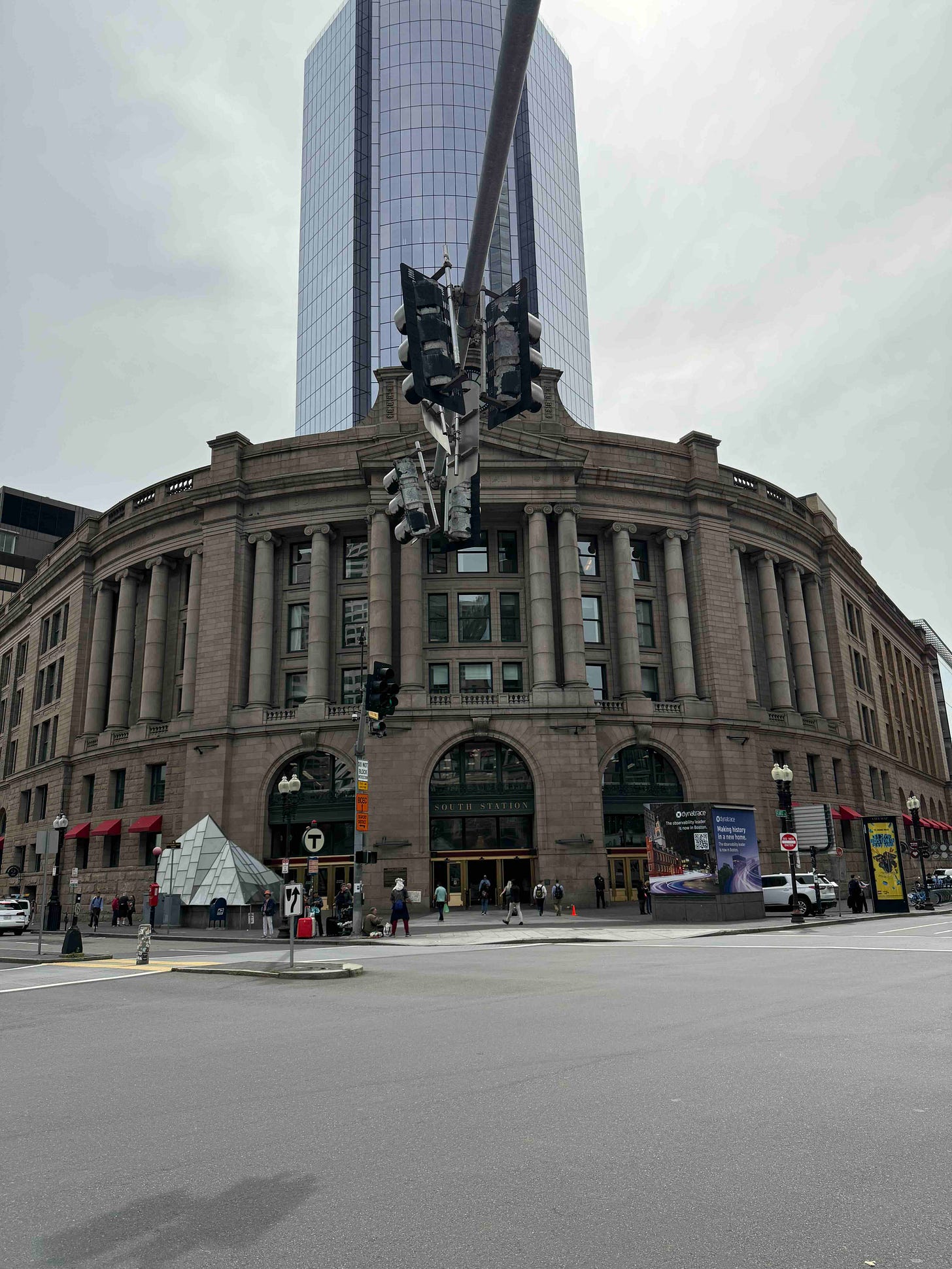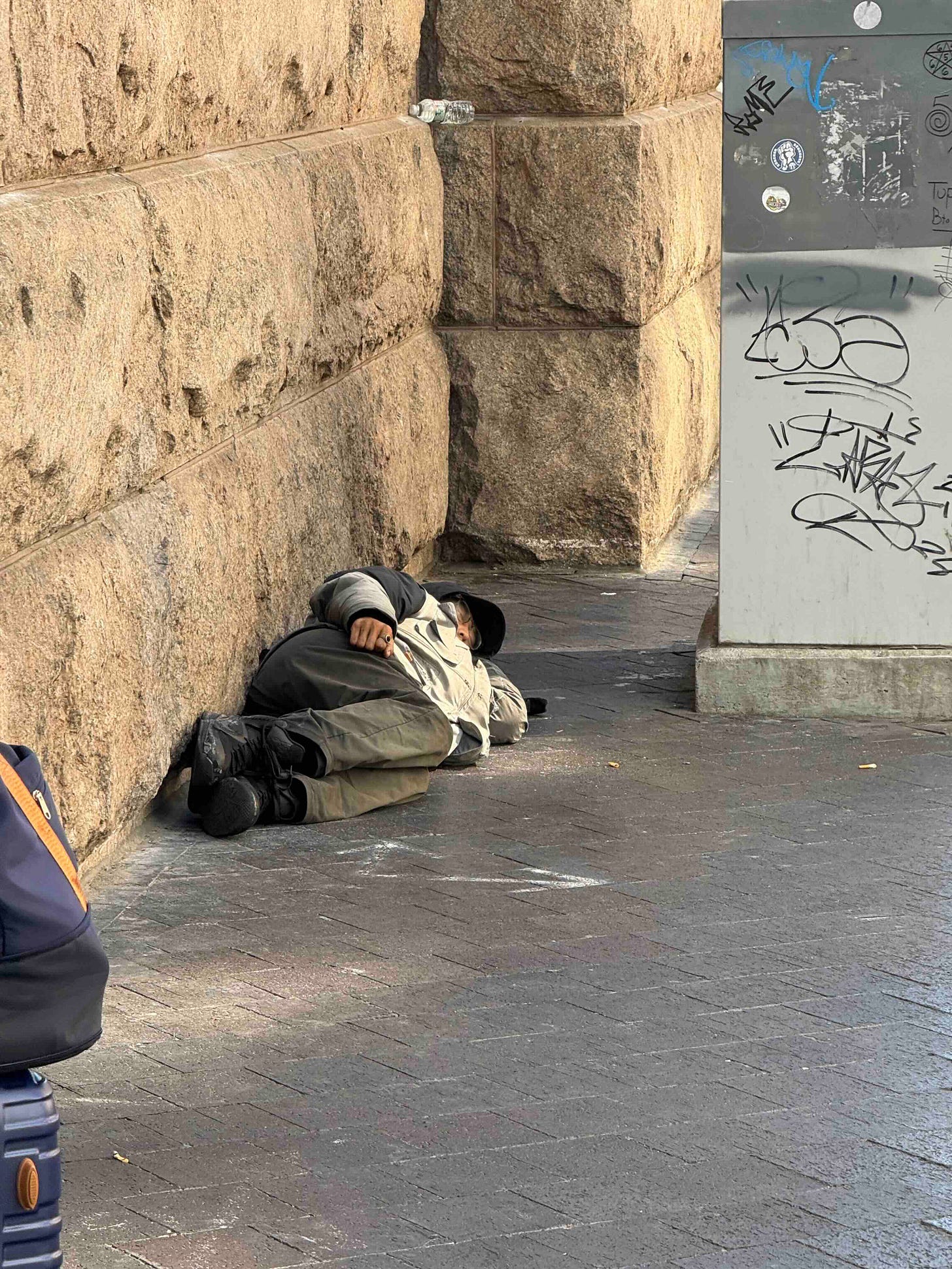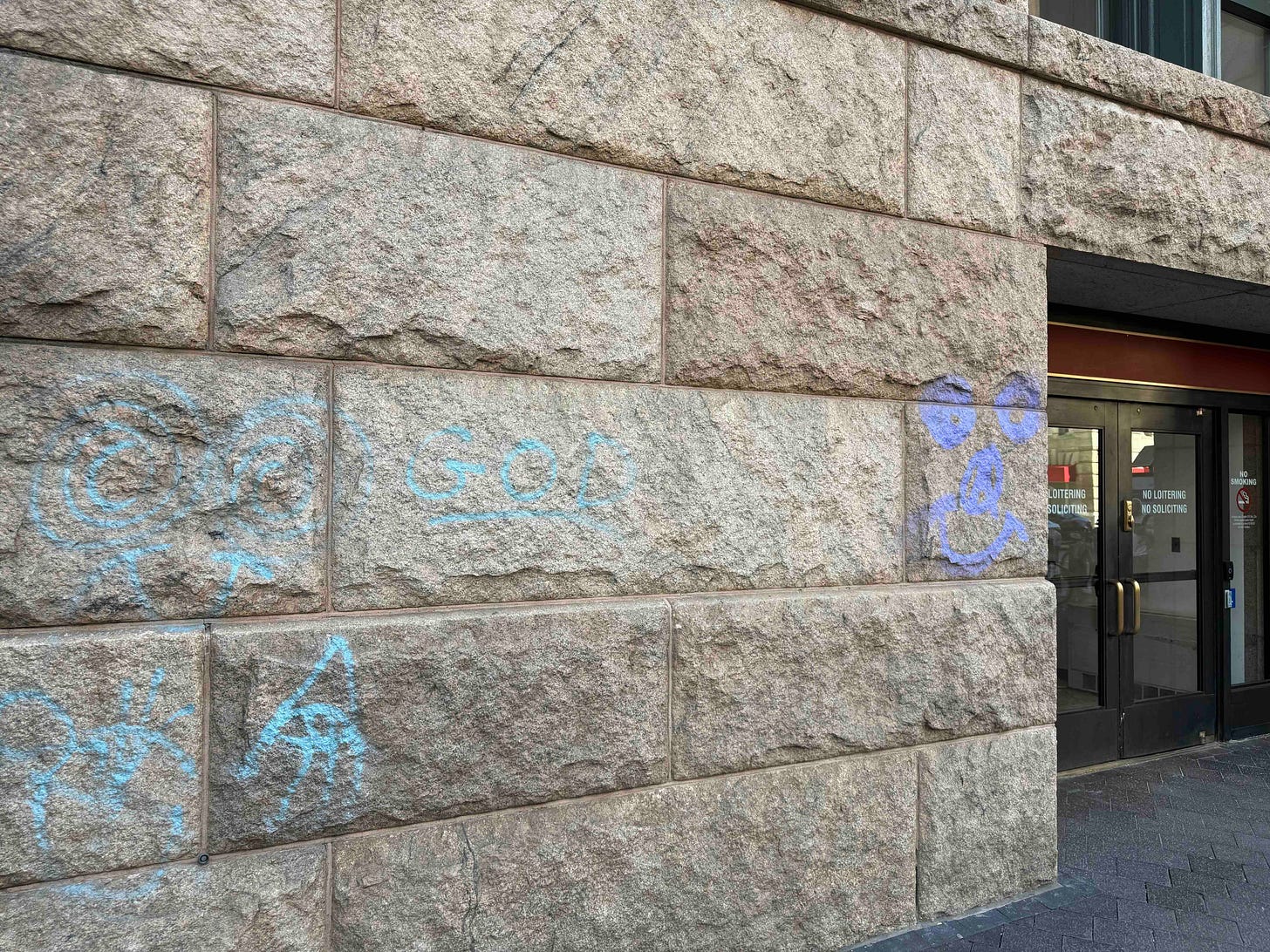Trump Should Take Over Boston’s South Station. It’s a Disgrace.
It encapsulates decades of urban policy failures. And yes, there's a Harvard angle, too.

The deputy secretary of transportation, Steven Bradbury, set off a backlash recently when he hinted that the federal government—that is, the Trump administration—might take over Boston’s South Station the way it has Union Station in Washington, D.C. “We need to address the cleanliness, the crime, the safety, and security of the station,” Bradbury said, “for the rail workers, for the passengers, because the people of Boston deserve that, all the people up and down the northeast corridor and Americans who travel on these trains.”
The governor of Massachusetts, Maura Healey, issued a statement denouncing Trump: “What the Trump Administration is doing in DC and now threatening to do at South Station is outrageous, wrong and has nothing to do with transportation or public safety. It’s more political theater, more political power grabs from Donald Trump. We don’t need or want his interference here. We’re not going to let the guy who went bankrupt six times take over our train stations.”
The mayor of Boston, Michelle Wu, who is running for re-election this year (a preliminary municipal election is Tuesday September 9), accused Trump of playing a game of “authoritarian monopoly.”
“Don’t even think about it. This is what dictators do,” said Senator Ed Markey, Democrat of Massachusetts, in a response directed at Trump’s implied threat to take over South Station.
Obscured by the power struggle among the politicians is the fact that South Station, the primary train and bus entryway to the city of Boston, is a disorderly place. Apparently homeless individuals are sprawled on the surrounding sidewalks.

Drug deals and injections are openly visible.

Graffiti mars the outside walls of the station.
Store windows feature large signs declaring “No Loitering, No Soliciting,” not exactly a warm welcome message to arriving commuters or tourists. If loitering and soliciting weren’t persistent problems, there’d be no need for the signs.
I publish the photos here not to embarrass any of the individuals pictured. I feel bad for them and wish them better health and shelter. It’s a failure of the people currently in charge of South Station to connect them with services that could lead them to more dignity. Maybe Trump could do better. It’s hard to imagine he could do worse. You’d think that Trump’s threat would catalyze a cleanup effort, but these pictures were taken Thursday September 4, days after all the stories about the threat. And it’s not like I had to hang around the station for hours to spot the issues. I’d seen them on previous visits and they were easy and quick to find this time, too. And I’m okay with urban levels of disorder; downtown Boston needn’t look as tidy as the nation-state of Singapore, or the Chestnut Hill Mall, or even Giuliani-era Bryant Park. But neither should getting off the Acela or a commuter rail train in South Station require passing through the 2025 Boston equivalent of a Dickensian opium den.
It’s a story with implications that go beyond Boston. The socialist who is the Democratic nominee for mayor of New York, Zohran Mamdani, has publicly named Wu as an example of the sort of progressive governance he wants to bring to New York. Some of the Boston station’s problems result from spending federal tax dollars in the pre-Trump years, and from other misguided, counterproductive national and local policies.
There’s even a China angle: A China-based real estate developer, Gemdale Properties, is a significant investor in a Ritz-Carlton condo tower being built over the station. That tower’s construction has made South Station even more chaotic, with temporary scaffolding obstructing visibility.
A political-science department or public-policy graduate school could teach an entire course on the missteps that turned South Station into what it is today. Here are eight factors—including “media bias” and a Harvard medical school professor determined to “decrease substance use stigma”—that helped create the problems:
Keep reading with a 7-day free trial
Subscribe to The Editors to keep reading this post and get 7 days of free access to the full post archives.




